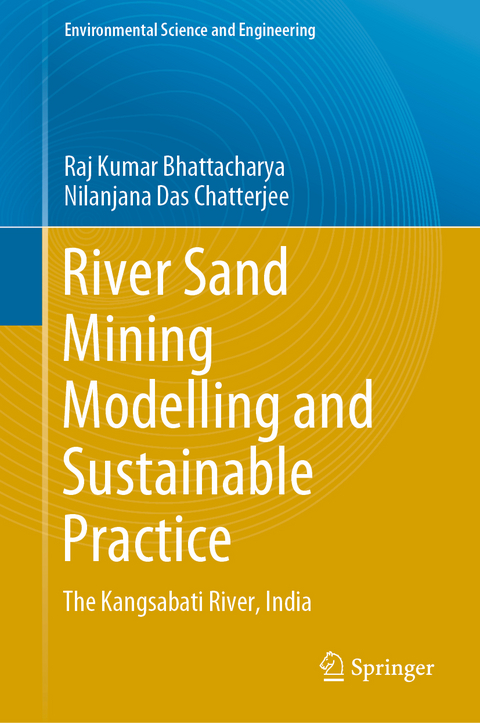
River Sand Mining Modelling and Sustainable Practice
Springer International Publishing (Verlag)
978-3-030-72295-1 (ISBN)
Worldwide demand for sand and gravel is increasing daily, as the need for these materials continues to rise, for example in the construction sector, in land filling and for transportation sector based infrastructural projects. This results in over-extraction of sand from channel beds, and hampers the natural renewal of sediment, geological setup and morphological processes of the riverine system.
In India, illegal sand mining (of alluvial channels) and gravel mining (of perennial channels) are two anthropogenic issues that negatively affect the sustainable drainage system. Along the Kangsabati River in India, the consequences of sand mining are very serious. The construction of Mukutmonipur Dam (1958) on the river causes huge sediment deposition along the middle and downstream areas, these same areas are also intensely mined for sand (instream and on the flood plain). Geospatial models are applied in order to better understand the state and the resilience of stream hydraulics, morphological and river ecosystem variables during pre-mining and post-mining stages, using micro-level datasets of the Kangsabati River.
The book also includes practicable measures to minimize the environmental consequences of instream mining in respect to optimum sand mining. It discusses the threshold limits of each variable in stream hydraulics, morphological and river ecological regime, and also discusses the most affected variables. Consequently, all outputs will be very useful for students, researchers, academicians, decision makers and practitioners and will facilitate applying these techniques to create models for other river basins.
Introduction.- Geomorphological thresholds and sand mining.- Sediment budget and mining area detection using RUSLE and SDR models.- Sediment analysis and mining intensity using G-stat, Grad-stat, Sed-log, LDF techniques.- Interruption on alluvial channel flow and sediment transport in quarried alluvial river: Application of different hydraulic techniques.- Impact of instream sand mining on river ecology using WQI, Biodiversity index, HSI, MLR.- Economic audit and Proposed sustainable sand mining using Optimization model and EIA.
| Erscheinungsdatum | 03.08.2021 |
|---|---|
| Reihe/Serie | Environmental Science and Engineering |
| Zusatzinfo | XXXIII, 376 p. 162 illus., 142 illus. in color. |
| Verlagsort | Cham |
| Sprache | englisch |
| Maße | 155 x 235 mm |
| Gewicht | 736 g |
| Themenwelt | Naturwissenschaften ► Geowissenschaften ► Geografie / Kartografie |
| Naturwissenschaften ► Geowissenschaften ► Geologie | |
| Schlagworte | Entrainment Threshold • Mining Induced Geomorphological Response • Mining Induced Stream Hydraulic Response • Riverine Landscape Dynamics • Sand Mining Optimization Model • Sediment Transport Behaviour • Three Tier Habitat Transformation |
| ISBN-10 | 3-030-72295-3 / 3030722953 |
| ISBN-13 | 978-3-030-72295-1 / 9783030722951 |
| Zustand | Neuware |
| Haben Sie eine Frage zum Produkt? |
aus dem Bereich


